A few weeks ago, I shared my current non-toxic skincare routine.
Today, let’s talk about creating your own skincare routine using non-toxic products. I believe caring for and nourishing the skin, our body’s largest organ, is important. I also believe this can be done on any budget.
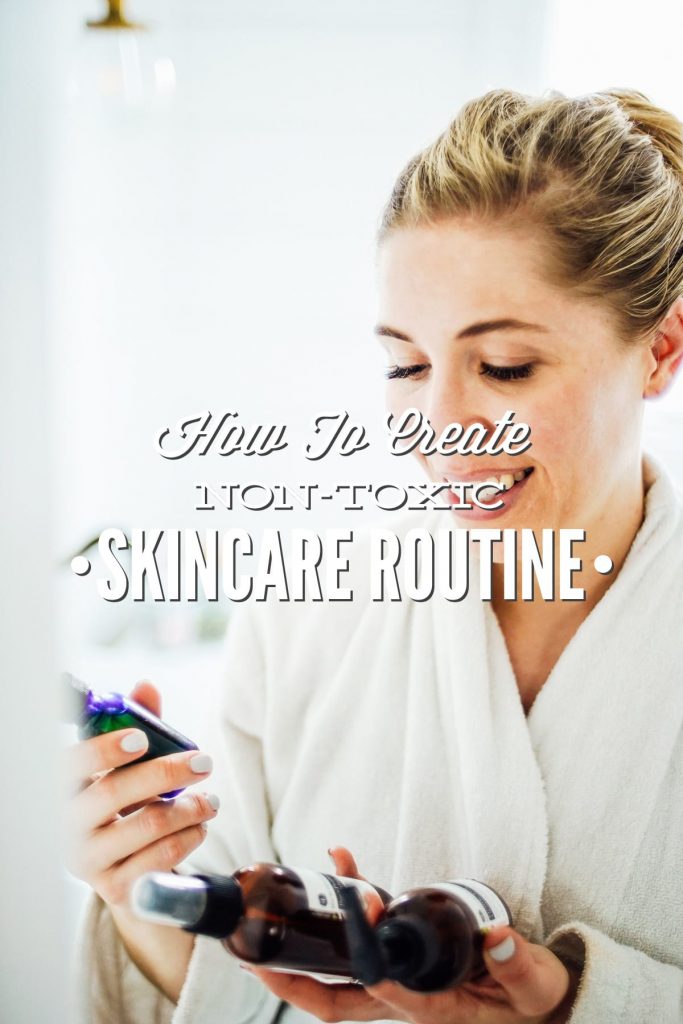
Want to Save This Article?
Enter your email & I’ll send it straight to your inbox. And you’ll get new recipes & tips each week.
Keep in mind, I’m not a skincare expert. I didn’t go to school for any skincare related fields. I went to school to be a teacher. After teaching for a number of years, I had a baby and started a blog about real food–a new journey for us. As our diet changed, we also began making changes to the kind of cleaning and body products we purchased and used.
I didn’t always have a healthy relationship with my skin. For a number of years, I dealt with adult acne from hormonal, stress, and gut issues. Over the past few years, I’ve been learning how to care for my skin, naturally. I’ve read books, listened to podcasts with skincare experts and functional medicine doctors, been on the receiving end of facials and skin treatments (like gua sha, peels, and microdermabrasion), and experimented with various products.
I was never taught how to care for my skin as a teen and young adult. I thought skincare was about applying a bunch of makeup and hiding everything underneath. Now I know that isn’t the answer. The answer is to care for and nourish the skin.
Don’t get me wrong, I love makeup. I find makeup to be fun and it can enhance a look. (Read about what I use for makeup in this post.) My emphasis today is on caring for my skin with lifestyle choices, nourishing food, and a skincare routine that supports my skin. (Read more about the lifestyle choices that have made the biggest impact on my skin.)
Today, I want to share what I’ve learned about creating a skincare routine with the goal of inspiring you to create your own skincare routine. I’m not talking about anything crazy here; just a simple skincare routine that nourishes and supports the skin.
The Basics of a Skincare Routine
The ProductsThere are three components to focus on when it comes to building a skincare routine: cleanse, tone, and moisturize. From there, you can build in other practices, if desired or needed. This might look like a mask used 1-2 times a week, a serum for a specific need (like acne, hyperpigmentation, brightening, cell turnover, etc.), and an exfoliator (which can also be a mask or an actual scrub exfoliator).
Let’s talk about the role of each component…
- Cleanse: A face cleanser shouldn’t be harsh or strip your skin of its own natural (beneficial) oils or even sterilize the skin. This stripping causes an imbalance of the skin, and this can cause breakouts and other issues. Instead, a cleanser should clean your face, gently, by removing dirt, makeup, and other debris from the day. Some people like to double cleanse, which simply means cleansing the skin twice. If you wear a lot of makeup during the day or you find your skin just doesn’t feel clean after one cleanse, double cleansing may be a good option for you. To do this, you can use the same cleanser twice, or use an oil cleanser first (or even a makeup remover made with nourishing ingredients, like this makeup remover balm) and then a dedicated cleanser. Personally, if I feel the need to double cleanse, I just use the same cleanser twice. There’s no need to use a cleanser in the morning. I’ve learned the secret to using any face cleanser is to first massage the product on a damp face and then use a soft, wet washcloth to rinse off the cleanser and any dirt/makeup (rinse a couple of times, if needed). The cleanser will loosen dirt and cleanse the face, but it’s important to use a cloth to aid in the process. I use gray washcloths since they don’t show makeup or dirt.
- Tone: A toner is a liquid sprayed on the skin that helps to calm, hydrate, balance the pH of the skin and regulate oil production, and prepare the skin for a moisturizer. There are couple of ways to apply a toner. Either spritz the toner on the face and then use your hands/fingers to press it into the skin or apply the toner with a cotton ball.
- Moisturize: When it comes to hydrating and moisturizing the skin, there are a few different options. The first option is an oil. I know, applying oil sounds scary. Many of us, including myself, were taught that oil equals breakouts. Just like we were taught that margarine is healthier than butter. Oils have been used for generations, including by ancient civilizations, to nourish skin. Oil can cause breakouts. Certain oils are more likely to clog pores and cause breakouts, which is why it’s important to avoid oils that are high on the comedogenic scale. The higher the number on the scale, the more likely that oil will clog pores and cause breakouts. Coconut oil is one of the highest ranking oils on the scale, at a 4. This means coconut oil is more likely to clog facial pores. Oils can be incredibly nourishing for the skin and have in fact radically transformed my skin; it’s just important to pick the ones that will work best for your skin. The second option is a cream. Creams are different than lotions in that they are made with oil and water, but have more oil in the mixture than a lotion. Again, if you’re concerned about clogged pores, it’s helpful to think about how the oils rate on the comedogenic scale. The third option is lotion. A lotion is made with oil and water, so the oil used isn’t concentrated. Because of this, lotions are many times cheaper than facial oils (since they’re “cut” with water). This doesn’t make them inferior; just different.
The Basics of a Skincare Routine
The PracticeWhat a skincare routine looks in the morning and evening may vary. You have to find what feels good and works best for your skin. As an example, here’s what works best for me…
- My morning skincare routine is quick, simple, and to the point (about 5 minutes). I simply rinse my face with water (no cleanser needed in the morning), spritz toner, and apply moisturizer. If I wake up early enough, I may apply a mask in the morning, too. This generally happens twice a week. For simplicity, we’re not talking about extras today (like a mask); just a basic skincare routine.
- My evening routine has more steps/products than the morning routine. In the evening, before bed, I wash my face with a cleanser to remove dirt and makeup and debris from the day, spritz toner, and then moisturize. I also add in a serum (for cell turnover), but a serum is just an extra and not something we’re going to talk about right now. I’ve also added in a couple of extras as well, because I’ve noticed a difference when using them, but these are also not required for a basic skincare routine.
I shared my personal skincare routine via video. If you want to see what I personally use and how I use the products, head over to this post.
Where to Focus Your Dollars
The price tag on most skincare products made with safe-for-your-skin-and-body ingredients aren’t going to be the cheapest options on the market.
If you’re on a tight budget, I recommend going the do-it-yourself route. Making products is many times a less-expensive option, but even then the ingredients aren’t cheap. A bottle of oil to make your own facial oil will cost you $12-15 and that’s just one oil. If you want to combine oils or add an essential oil, you’ll need to spend more. Many times you can use these ingredients multiple times, making them less expensive than a store-bought option, but there’s still an upfront expense.
With that said, if you don’t want to go the DIY route, let’s talk about prioritizing where to spend money for a budget-friendly approach. If I had to pick the one product I recommend spending money on, that would be a moisturizer. My second pick for where to spend money is a cleanser.
Creating a Skincare Routine on Any Budget
Non-Toxic Product SuggestionsLet’s talk about some options that I’ve personally tried and loved for cleansers, toners, moisturizers.
I think it’s great to experiment with options. Just because a product is natural or non-toxic and made with nourishing ingredients doesn’t mean it’s right for your skin. What works amazing for one person may not be amazing for you. Skin is incredibly unique and it’s important to get to know what your skin loves and also what it doesn’t love.
When it comes to store-bought options, here are my recommendations for experimenting with products without spending a ton of money…
- Try samples. The Detox Market lets you pick up to 4 products to sample with My Little Sample Bag. This is a fantastic way to try products before making a final purchase. It costs $7.99 for 4 products, which is a small price to pay compared to dropping hundreds on multiple products that you may or may not love. Some individual companies will also send sample bags of products. You may need to email the company or just poke around on their website. If you try a product and love it, order a larger size. If you don’t, move on.
- Take a quiz. Follain offers a customized quiz that will help you determine which products will work best for your skin.
- Visit a green beauty store. Green beauty stores are few and far between. Follain, Detox Market, Credo, AILLEA, and Lemon Laine are just a few of the stores you can visit across the nation and Canada. Most of these stores offer samples or you can try product while in the store. And most of these stores curate product, so they only sell what they believe is the “best of the best” in each category: cleanser, toner, and moisturizer. Even Sephora sells some products now, but it’s hard to know what’s actually a non-toxic product and what’s not. So if you’re new to non-toxic skincare, Sephora may not be the best option, unless you’re going in specifically for a product you already know about.
- Try a subscription. True Botanicals, one of the brands under the high price category, offers a subscription service called Sun and Moon. The free subscription allows you to choose how often you receive a specific product and also take advantage of a subscription discount. Luminance Skincare offers a similar subscription discount option.
When looking for a non-toxic skincare product, choose a product made by a company that’s transparent about ingredients. A company should be proud of the ingredients used and should clearly state these ingredients on packaging and their website. A company shouldn’t hide behind mysterious words like fragrance. Instead, a company should be willing to share exactly what’s in a product and how it’s made.
I’ve tried a lot of different brands and homemade products over the years. I don’t want to leave you “hanging” when it comes to creating a skincare routine. I thought it would be helpful to leave you with a few product recommendations. Since you can develop a skincare routine on any budget, let’s talk about high, middle, and low price range recommendations. Low is up to $15, middle is between $15-30, and high is over $30.
Cleanser
Low
Homemade Honey and Aloe Facial Cleanser: If I went back to a homemade cleanser this would be the one. This cleanser is incredibly simple and affordable, containing just three ingredients: aloe, honey, and oil.
Homemade Basic Natural Face Wash: If you want a soapy cleanser, this is a great one. This face wash is made with a base of castile soap and can be customized based on your preferences.
Acure Cleansing Gel: Acure is a budget-friendly brand found at Whole Foods and many retail shops. They make two different cleansers, a gel and a cream option, based on your preference. I particularly like the gel option. $8-10
Luminance Skincare Delicate or Cream Cleanser: The delicate cleanser in this line reminds me of the homemade face wash above, but with other nourishing ingredients added. If you’d like to use a cream cleanser, particularly if your face feels dry after cleansing, this is an affordable option. $19-23
Middle
One Love Organics Easy Does It Cleanser: If you’re looking for a store-bought option that’s foaming, this is a great option. This cleanser is suitable for all skin types, including dry skin since it won’t dry or strip your skin. $25
High
Marie Veronique Cleansers: Marie’s products are formulated specifically with the microbiome of the skin in mind. Second to OSEA Ocean Cleanser, Marie’s Gentle Cleanser is my favorite. $35-40
OSEA Ocean Cleanser: I use this cleanser daily. The seaweed cleanser hydrates, balances, and removes makeup and other residue from the day. It contains lactic acid (derived from beets) which helps to exfoliate the skin. The bottle is quite large, so I find one bottle lasts several months. $48
There are actually quite a few options that I have tried and enjoyed in the cleanser department. If you’d like to read about more cleanser options, check out this post.
Toner
Low
Homemade Apple Cider Vinegar Toner: Yep, you can actually use apple cider vinegar from your kitchen to make an inexpensive and effective toner. The one downfall is you’ll smell like vinegar and the scent does linger, particularly if you sweat. Always dilute vinegar with water before spritzing or applying on the skin.
Homemade Herb-Infused Toner: This is a recipe from my Body Care Simplified Book. This toner is made with a dried herb of your choice, witch hazel, and water.
Middle
Rosewater (Brands I like, include: Cocokind, S.W. Basics, and Luminance Skincare): Rose hydrosol, also known as rosewater, is a fantastic and budget-friendly toner. Look for a rosewater that literally contains just that: rosewater. To do this you’ll need to read the ingredient list. Other hydrosols (floral waters) may also be used as toners. Evan Healy makes and sells several other hydrosol options, including lavender hydrosol. $12-20
High
Marie Veronique Pre+Probiotic Mist: This toner is unique in that it contains micronutrients that encourage microbial diversity. This is what I use for a toner both day and night. This is a great toner for any skin type. $40
True Botanicals Nutrient Toner or Mist: This is my second favorite toner. The first being Marie Veronique. This toner does have a very heavy scent, so if you’re not into a strong scent this probably isn’t for you. True Botanicals makes three separate lines: clear (for acne), renew (for aging) , and calm (for rosacea). This product is called a nutrient toner (antibacterial to clear congestion) in the clear line and a nutrient mist (antioxidant and hydrating to prevent damage) in the renew and calm lines. I like the clear line toner. $48
Indie Lee COQ-10 Toner: This hydrating and balancing toner is made with hyaluronic acid and aloe vera. As the name suggests, it’s formulated with the antioxidant CoQ-10 for extra protection from environmental pollutants. Another multi skin type option. $34
Side note: Detox Market does sell a budget-friendly discovery kit for this line that includes all three products: cleanser, toner, and facial oil. I’ve been told the cleanser is amazing. I just haven’t tried it yet.
Laurel Facial Elixir: Laurel makes two versions of her elixir (toner): oily/combo skin and normal/mature skin. Both versions are essential oil heavy, but don’t have an overly-strong or unpleasant scent. I’ve used the oily/combo skin one with good success. $56
Moisturizer
I’m going to lump oils, creams, and lotions all together here. We already talked about the difference earlier. I personally prefer a facial oil, but everyone is different. Keep in mind that with most of these products a small amount goes a very long way. So while most bottles are small, they do last quite a while (about 3-4 months for me).
Low
Homemade Lightened Up Moisturizer: A light oil moisturizer made with aloe vera and a nourishing oil of choice.
Homemade Shea Butter Cream Moisturizer: An ultra hydrating moisturizer made with shea butter and a nourishing oil of choice.
Cocokind Chia Facial Oil: This is about as basic as moisturizers come (just two ingredients), but it’s a fraction of the cost of other chia facial oil options. Another plus is you can find Cocokind products in many stores: Target, Whole Foods, and health food stores. $13-15
Middle
Luminance Skin Hydration Moisturizer: This is a silky moisturizer with a lighter feel. It definitely feels more like a lotion consistency. This moisturizer is blended with oils for anti-inflammatory and hydration as well as rosewater. $29
High
Indie Lee Squalane Oil: This is another very basic oil moisturizer. It contains one single ingredient: 100% pure, olive derived squalane. This oil is hydrating, readily absorbed, and doesn’t feel greasy. If you want to try a facial oil, but have concerns about trying a product that mixes multiple oils, this is a great start. $34
Side note: Detox Market does sell a budget-friendly discovery kit for this line that includes all three products: cleanser, toner, and facial oil. I’ve been told the cleanser is amazing. I just haven’t tried it yet.
OSEA Essential Hydrating Oil: OSEA is one of my favorite brands and I have yet to be disappointed by their products. This ultra-hydrating oil is made from a blend of jojoba and sesame seed oils and designed for aging, dry, and sensitive skin. $36
Laurel Anti-Inflammatory Facial Serum: This is a concentrated multi-oil moisturizer, anti-aging serum, and mild sun protection all in one bottle. It’s also made with anti-inflammatory herbal ingredients, too, so it’s great if you’re looking for an aid in calming inflammation on the skin. $88
True Botanicals Pure Radiance Oil: This is my go-to moisturizer. It’s what I use morning and night and it’s transformed my skin for the better. I love the scent and the way it feels on my skin. True Botanicals makes three separate lines: clear (for acne), renew (for aging), and calm (for rosacea). I use the renew line for the oil. $110
Laurel Healing Balm: This is a balm made with shea butter and a handful of oils (similar to the shea butter moisturizer above but already made for you and also infused with herbs). It’s suitable for all skin types, and particularly great for dry skin. It’s ultra hydrating but still light enough to use as a moisturizer. $68
Ursa Major Golden Hour Recovery Cream: This cream is made for dry, normal, and combo skin. The cream is incredibly hydrating and soothing. $48
Osima Purely Simple Face Cream: This is a cream formulated for sensitive or “reactive” skin. It’s made with a low amount of oil-based ingredients, so if you’re looking to avoid products that contain a lot of oil(s), this is a great one to try. $60
Josh Rosebrook Vital Balm Cream: My favorite cream-based moisturizer. This product is rich and indulgent and highly effective at hydrating the skin. You only need a small amount so the jar goes a long way. For $45 it’s a sweet deal. You can use this as a moisturizer alone or use it on top of an oil at night for extra hydration. $45
Josh Rosebrook Nutrient Day Cream (with Broad Spectrum SPF 30): If you’re looking for a SPF cream that doubles as a daytime moisturizer, this is what I recommend. If you go this route, you will need to use something else in the evening. $85

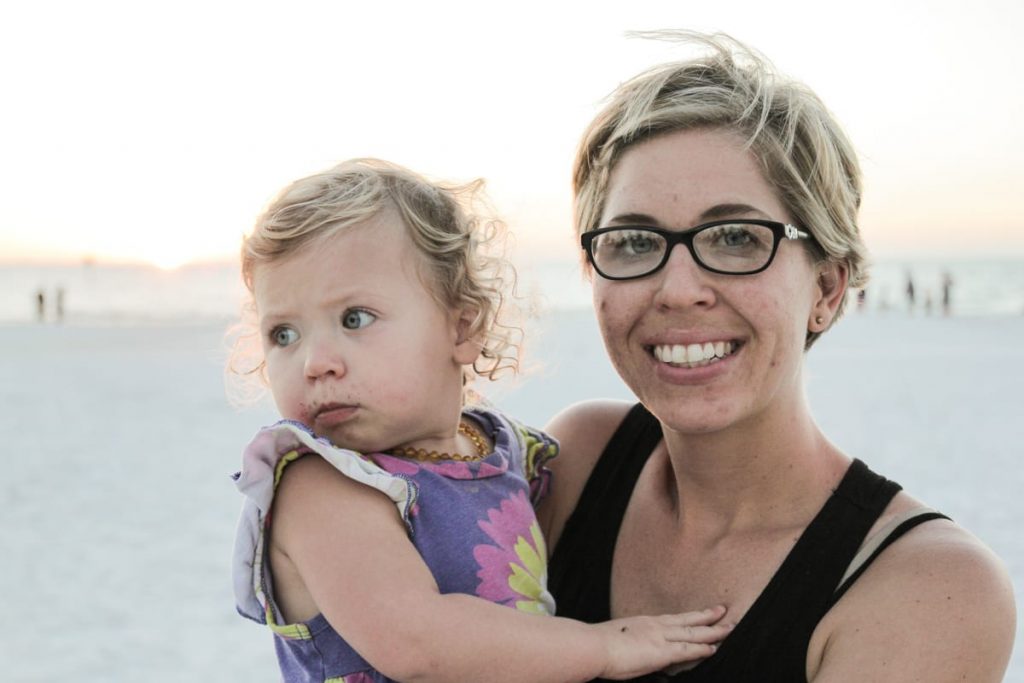
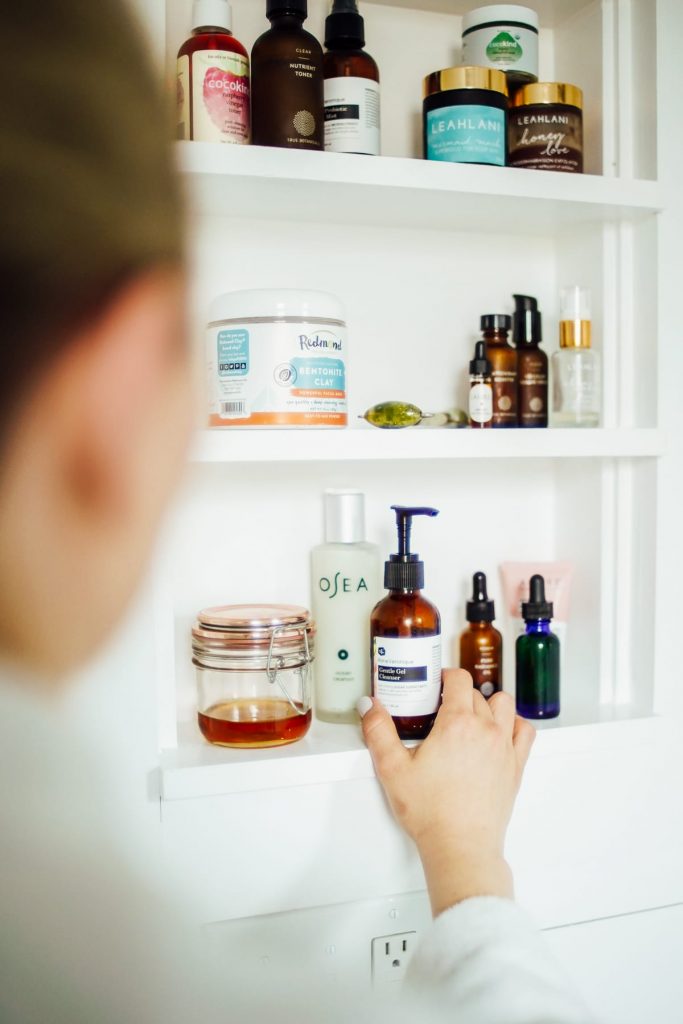
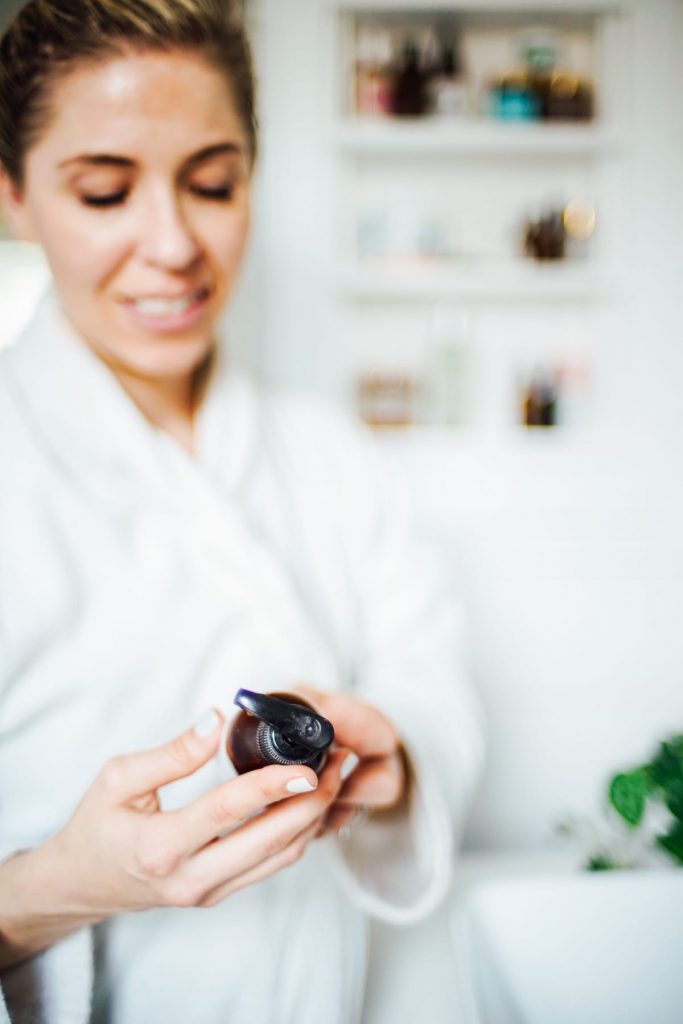
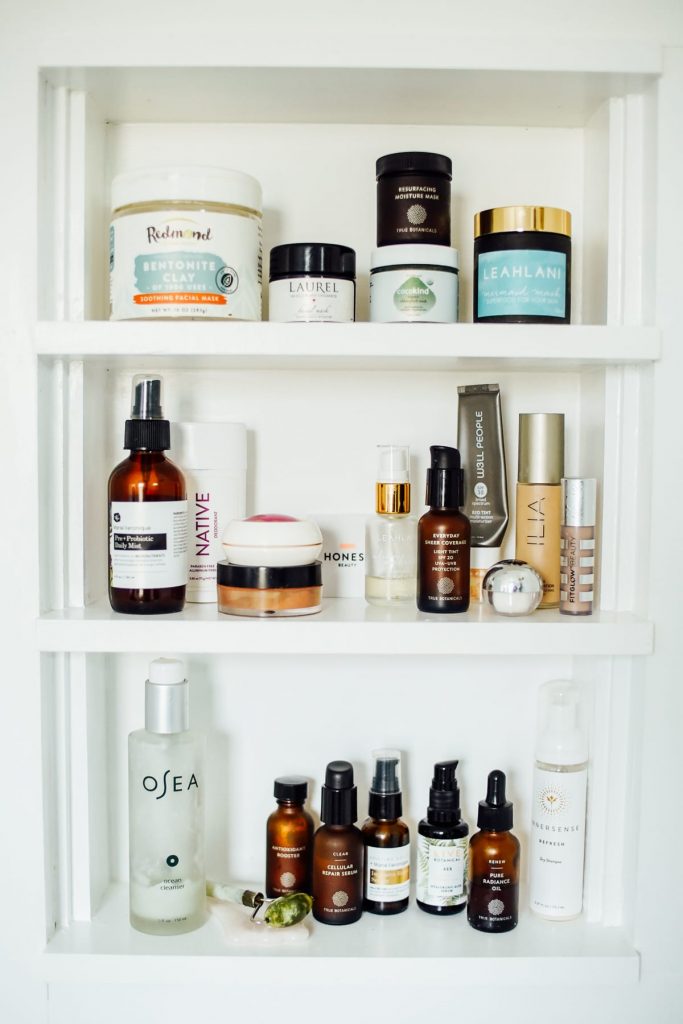
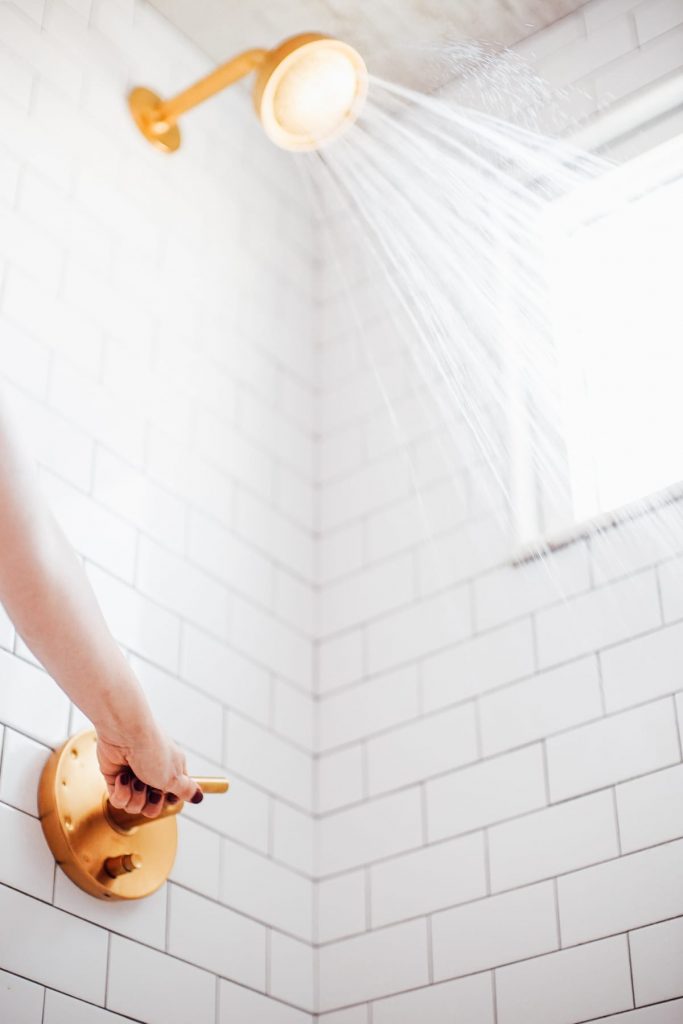

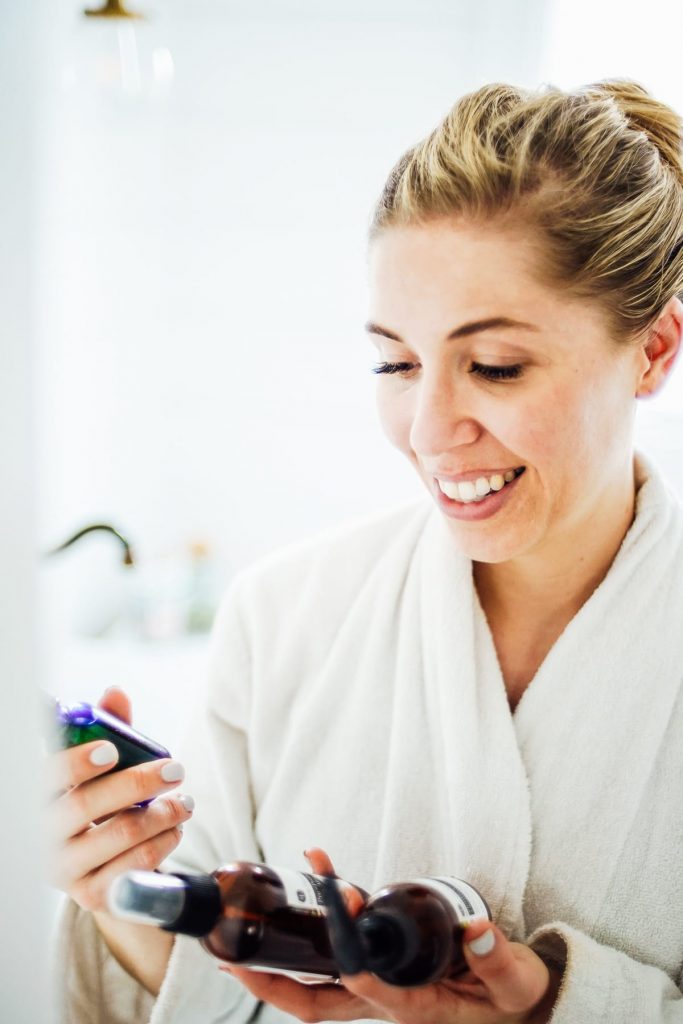
Your blog is great. I read a lot of interesting things from it. Thank you very much for sharing.
Thanks, Shireen.
Conventional beauty products utilize petroleum-based ingredients and usually rely on a host of other chemicals for their production process. These compounds are typically harsh substances, like petroleum, aluminum, and lead, all of which require extensive mining. It is nice to go for skincare products that are is non-toxic even though a little bit pricey.
Thank you for the info!
LS Team
Do you recommend a SPF in your facial moisturizer? If so, what would be a good middle priced brand?
Hey CVB, I love Suntegrity and Josh Rosebook. You’ll find my favorites here: https://livesimply.me/switching-to-natural-products-non-toxic-sunscreen-plus-spf-lip-balm-and-tinted-moisturizer/ Suntegrity is new to my list, so you’ll have to google that brand.
Ok thanks Kristin Marr.. I don’t know much about balance the ph of the skin.
Hey Kristin Marr, Can you please tell me, is it really essential to use a toner? can I skip this step?
Hey Fariah, It’s not “essential” but recommended since it will balance the pH of your skin after cleansing and add hydration before moisturizing.
Currently using this guide to make my skincare routine. thank you
Hey Cami, So glad it’s helpful for you.
I have been using aloe vera and honey on my face and got amazing results. Now, I will add the oil as well to see some more wonderful results. Thanks for this post.
That’s awesome, Kate! So happy to hear that.
Awesome! So glad you found a few good ones to check out. I like your suggestion, too!
Thank you!
LS Team.
Hi, thanks for getting back to me re postage cost. There are no, ‘overnight,’ options to choose as you suggested, $49. international postage cost is automatically chosen at checkout for the customer.
That’s a shame, it seems like a good idea.
Hi, so I went and picked out 4 samples for $7.99 and got as far as shipping and that was $50.!!!!!!!
So, umm, that’s a no from me! What a rort and a rip off!
Hey Joy, The shipping shouldn’t be $50. I’ve never heard or seen that before from Detox Market. I’ve ordered many samples from them and never paid that much. I would contact Detox Market and ask why it was so expensive. There’s definitely something off.
Hey Joy,
I just talked to a gal that works with and asked her experience. She just placed a sample order last night and only paid $1.99 in shipping. She said that’s what she always pays. Maybe you selected one day? Their shipments are super fast and usually arrive in just a few days.
Excellent information. Your site definitely explains essential concepts to its readers. Thanks for continuing to write such wonderful articles.
Thanks, Kristin, for all your advice… I can only imagine how much research and work goes into it. You are appreciated.
I have learned so much with you.
Have a great and happy summer with your husband and kids!
All the best from Canada!
Great post! And what a discovery! I didn’t know that my name was a line of natural skincare products!
Thank you for your blog! It is my « go to ressource » for everything natural. 😉
That’s awesome!! That line makes amazing products!!
Thanks so much for sharing!
You’re welcome, Lisa! So glad the suggestions are helpful for you.
Hi Kristen, I enjoy your site. Regarding skin care, I’m interested in comments from post- menopausal women about products they’ve found effective, DIY and bought. Thanks.
Hey Jenny, Thanks so much. I would definitely take the Follain quiz–anti-aging (a good vitamic C product and product specifically a serum that encourages cell turnover) and hydrating products are probably the best way to go and the quiz is great about pinpointing options. I hope some other folks will be able to weigh in here via comments about what they love and use.